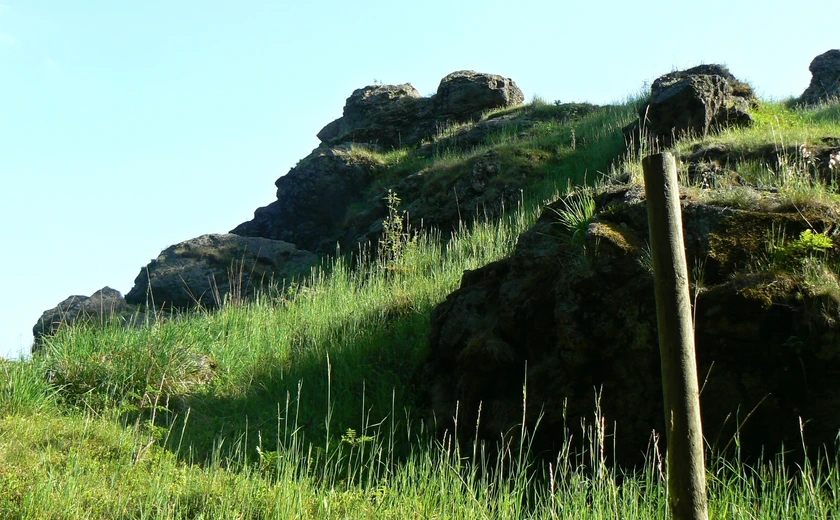Domin Rock Formation - Dominova skalka
This small but unique protected area can be seen from the road connecting the village of Louka u Mariánských Lázní and Nová Ves.
In 1973, a survey of the then proposed protected territory of 'Hadec Rock at Nová Ves' was undertaken. As we can read today from the records of the time, this area was considered to be one of the most valuable in the entire area: '…it was claimed that the territory is an extraordinarily valuable display of serpentinite biocoenoses in various stages of development from the initial stages to nearly barren serpentinite rock formations, through grassy slopes, to communities of serpentinite pine wood. The area contains an abundance of rare and protected plant species: Erica carnea, Chamaebuxus alpestris, Asplenium adulterinum, Asplenium cuneifolium, and more, and it represents the very best developed serpentinite community region of Slavkovsky Forest.'
Basic Information | |
Category | Natural site |
Altitude | 719–757 m above sea level |
Extent of specially protected area | 6.61 hectares |
Border length | 1200 m |
Geology
The area located roughly between the northern edge of Mariánské Lázně, Lunapark, and the settlements of Sítin, Prameny, Mnichov, and Nová Ves is undoubtedly a unique natural territory of Slavkovský Forest. There is a complex here of serpentinite rock formation massive that is predominantly overgrown by pine wood. Serpentinite is a geological developed transformed mineral, a composition of secondary iron silicates and magnesium. It formed through a combination of original olivines and pyroxenes in venous igneous rock. Given its chloritic character, most of the minerals have a predominant dark-green color, occasionally interrupted by lighter stripes of filamentous serpentinite. It is often compared to snake skin due to its appearance (hence the Czech name 'hadec', from 'had', or snake). This is a nutrient-poor mineral, thus more enduring. The soil formed by weathering contains a high percentage of magnesium, which together with other elements have formed a specific substrata that markedly influences the vegetative cover.
Flora
On the deforested serpentinite outcrop with the ring of serpentinite pine wood, we can see a vegetative copy of the more extensive Křížky National Nature Park. In addition to fragments of Erica Herbacea, Polygaloides chamaebuxus, and Arnica montana, the most important biotopes of the rock formation Asplenium cuneifolium, Asplenium adulterinum, Botrychium lunaria and the critically endangered Galium sudeticum exist. The local population of Cerastium Alsinifolium is a unique document of the development of this endemic species for every botanist. Its markedly morphologically differentiated micropopulation is tied in with the rich growth of the Cerastium arvense below the rock formation.
Fauna
As with other NPP’s with a serpentinite base, there are rare species of insects here characteristic for relict non-wooded biotopes. These include Stenoborthrus nigromaculatus, the Papilio machaon, and the Apatura iris.
Forestry
The reservation is home to a relatively young serpentinite pine wood (association Asplenio cuneifolii-Pinetum) with typical undergrowth. Outplantings of spruce and blue fir. All the foreign species of wood are to be gradually removed from the area as part of a forest renewal program, and the structure of serpentinite wood pine will be improved by planting autochthonic pines.
Usage
Up until recently, the territory of the reservation was part of a planned game preserve with intensive deer breeding, but luckily it was never realized. The largest non-wooded rock formation was exposed by random seeding. A very large rock formation is exposed. The wide range of biodiversity in this area is supported by the Protected Landscape Area administration by careful goat and sheep grazing.
Protective measures
The main objective of the PLA administration is now the protection of the critically endangered serpentinite vegetation, including the specially protected species (3 species in the critically endangered category, 1 in the strongly endangered category). This primarily means directed cutting of random spruces from the serpentinite rock formations and extensive grazing of non-wooded areas with goat and sheep herds. Part of the experiment at present is supported by the rejuvenation of Cerastium alsinefolium.




